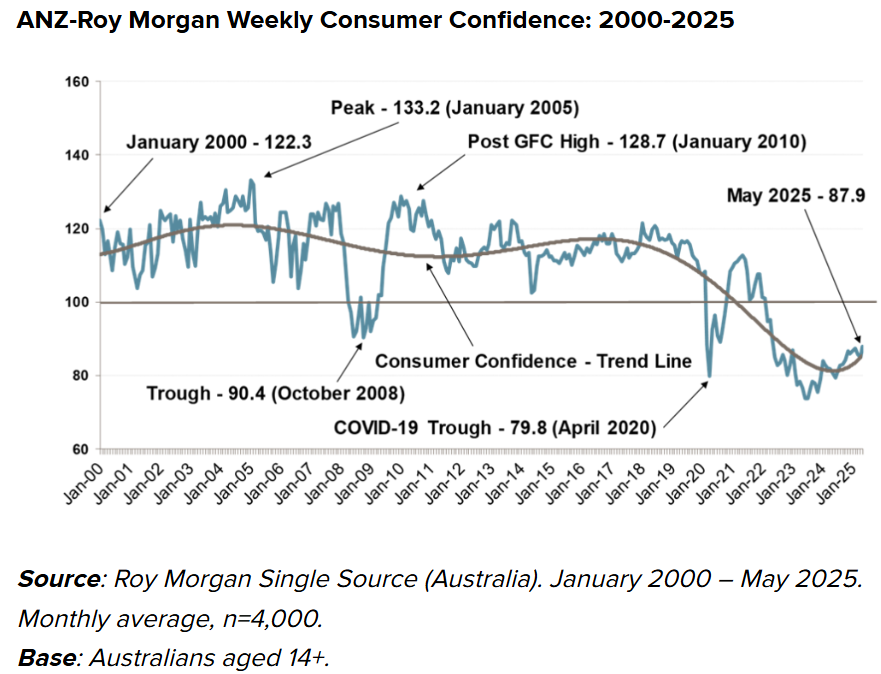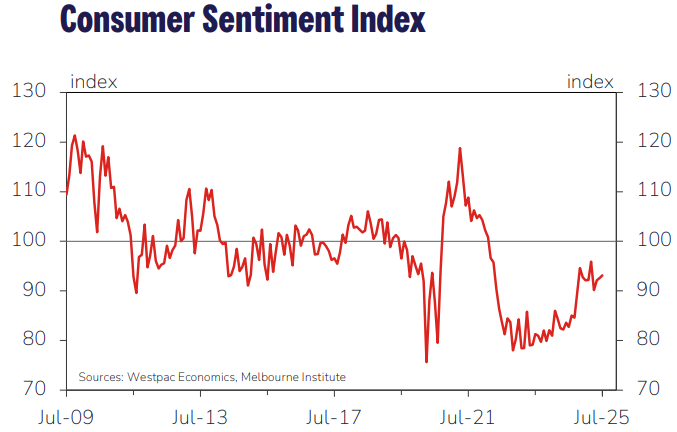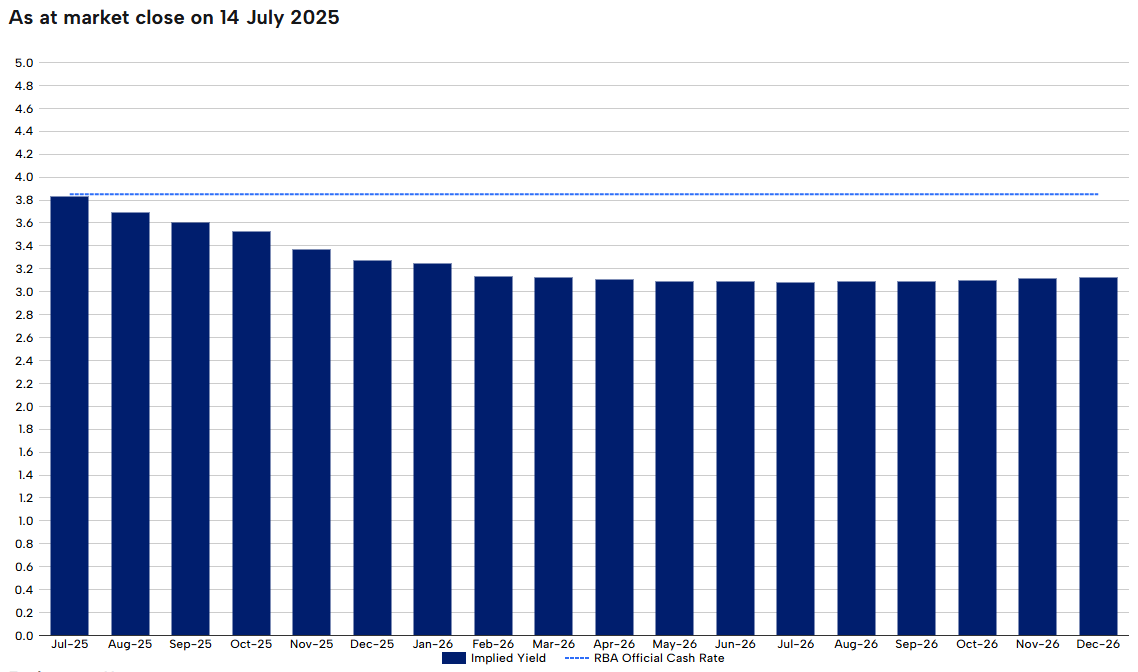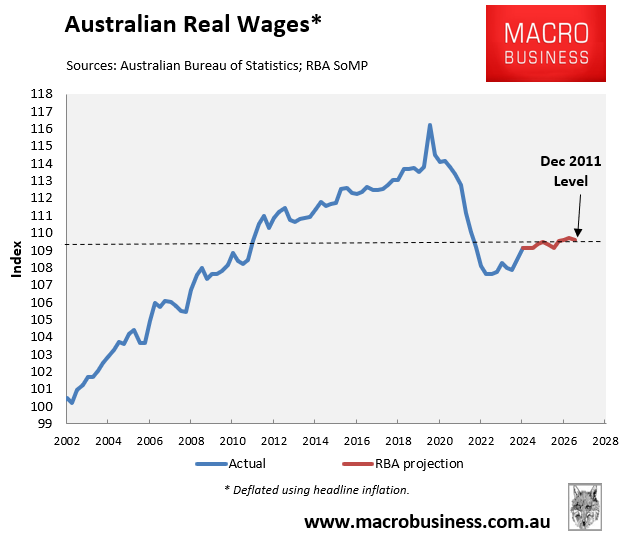ANZ-Roy Morgan Weekly Consumer Confidence Index has languished below the neutral 100 mark for more than three years, the longest and deepest stretch this century.

The ANZ-Roy Morgan Weekly Consumer Confidence Index last reached positive territory above 100 in March 2022, just before the Albanese government was elected into office.
“Low confidence isn’t just a mood swing; it feeds a self-reinforcing cycle in which households pull back on discretionary spending, businesses delay new investments or hiring, and government revenues come under pressure”, noted Roy Morgan.
“Even as inflation eases as we’ve seen over the last year and interest rates fall, Australians remain wary of the very institutions they rely on – banks, governments, retailers – and so the brakes on recovery aren’t released”.
The latest monthly consumer sentiment survey from Westpac paints a similar picture with sentiment also remaining below the 100 neutral level for more than three years, albeit showing clear signs of improvement this year as interest rates have been cut and inflation pressures ease.

Westpac’s Head of Australian Macro-Forecasting, Matthew Hassan, showed that last week’s unexpected decision by the Reserve Bank of Australia (RBA) to hold rates steady thwarted a bigger improvement, leaving sentiment stuck at ‘cautiously pessimistic’ levels overall.
“Those surveyed before the decision was announced reported an index read of 95.6 while those surveyed after reported an index read of 92”, Hassan wrote. “The reaction checked what would probably have been a solid rise”.
“This is the third time since late last year that events have conspired to undermine promising improvements in the consumer mood”.
“Daily responses showed similar patterns in April (following the ‘Liberation Day’ tariff announcements) and back in November (when a milder RBA disappointment combined with a surprise US Presidential election result)”.
“The latest check to sentiment is less dramatic but it still leaves the consumer mood stuck at ‘cautiously pessimistic’ levels overall”, Hassan said.
Nevertheless, Australian consumers still believe that the RBA will cut rates in the year ahead.
“The Westpac–Melbourne Institute Mortgage Rate Expectations Index, which tracks consumer expectations for variable mortgage rates over the next 12 months, declined 1.7% to 83.1, a new thirteen-year low”, Hassan wrote.
“The detailed responses show that, amongst those surveyed after the RBA decision, just over half of consumers with a view expect mortgage rates to be lower in a year’s time. The figure is closer to 60% amongst consumers with a mortgage”.
Their views align with the futures market, which expects two 0.25% rate cuts by the end of 2025, followed by one further reduction in 2026.

Ultimately, consumer sentiment won’t recover properly until real wages recover. However, as illustrated below, the latest Statement on Monetary Policy (SoMP) by the RBA forecasts that real wages will rebound to only December 2011 levels by mid-2026.

Australians experienced a record decline in living standards. And it will take more than a few interest rate cuts to sustainably lift sentiment back into positive territory.

